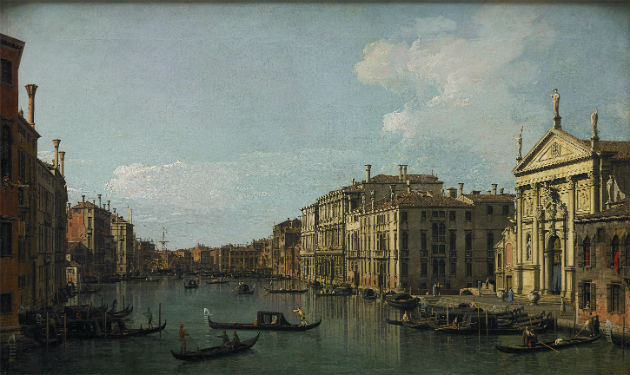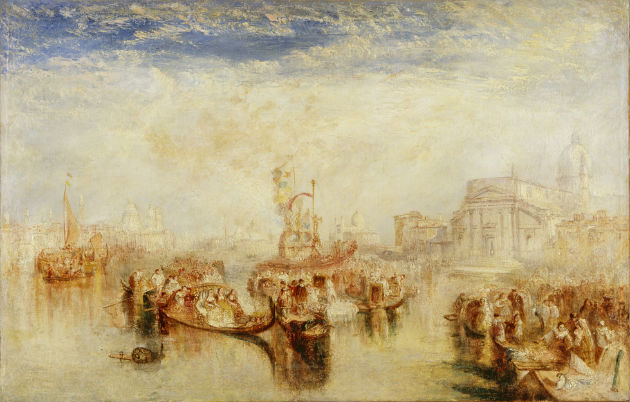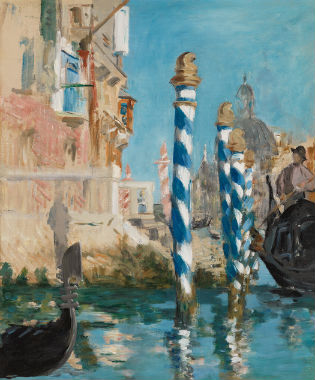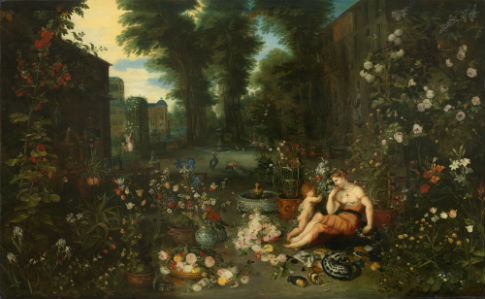Paul G. Allen, whose billions come by way of co-founding Microsoft, bought his first Monet in 1992. "It’s great to make a pilgrimage to museums," he told the curators of a traveling exhibition of his landscape collection, "but after a while you start wondering what it would be like to live with amazing pieces in your own living spaces and to have them give you those same kinds of feelings in daily life." I’m sure many do wonder about exactly that, but few have the resources to own and then rather generously send on the road a couple of Canalettos, a Turner, a Cole, two Morans, a Manet, five Monets, a Sargent, a Hopper, a Klimt—and more. It’s as though Allen read the entry on landscape painting in The Oxford Companion to Western Art and said, "I’ll take one of each, please."
Envious kidding aside: much discernment obviously went into selecting these pieces, currently on display at the Phillip’s Collection in Washington. It’s also worth noting that they have been very gently and thoughtfully curated, and the result amounts to one of the most entrancing exhibitions to come through Washington in several years, modest in size, but not in scope or beauty.
The quality and range of the paintings—the earliest are a set by Jan Brueghel the Younger, and the most recent are by David Hockney and April Gornik—give a visitor the opportunity to consider the whole modern career of landscape painting, a genre that disappeared almost completely in the Middle Ages, came back to life as a decorative element in religious paintings and portraits, and achieved independence and a kind of middling respectability in academic consensus (better than still-life, not quite as grand as history painting) before getting caught up in the great leveling introspection of modernism.

A prominent subtheme here is Venice—really, it would have been possible to organize out of this collection a smaller but not much less grand show entirely on that principle. The two Canalettos, in strikingly different states of preservation, show landscape as crisp, realistic topography—or nearly so, as Canaletto was not above omitting a building here and there to achieve a more dignified effect. His apparently objective approach, and the sense of calm his painting often projects, can also draw attention away from the drama of his staging.
If Canaletto’s approach was to improve subtly on an already grand Venetian reality, Turner (painting in 1841, well into his late, proto-Impressionist phase) gives us a smoky, subjective city, though he ennobles his cityscape by turning it into a history painting, fancifully depicting the formal depositing of three paintings of the Madonna by Bellini into the church of Il Redentore. You see the paintings just right of center, beneath what the curators point out is a statue of Justice, a symbol of the Venetian Republic. It is really quite a canvas—radical stylistic experimentation; formal, even old-fashioned genre tropes; a tribute to the heritage of landscape painting (Bellini was a pioneer); and a nod in the direction of liberal politics.

There are American painters here, too, though in Allen’s collection their subjects are often European—I briefly mistook one of the Morans at a distance as a second Turner, consoling myself that Moran was actively imitating Turner’s way of painting Venice. (There is also a Moran of the Grand Canyon here.) Thomas Cole’s ‘Ruins in the Campagna di Roma, Morning,’ painted in 1842, also bears a liberal political message, depicting a mausoleum widely thought at the time to have been the site of a slave revolt.
Strictly religious painting was out of high fashion, but painters still often concerned themselves with objects of veneration: Cole’s monument to freedom, or Moran’s vision of the American future by way of the Grand Canyon, or Cézanne’s (did I mention there was a Cézanne here?) beloved Mont Sainte-Victoire.
If Turner was a harbinger of the long, subjective gloaming of Western landscape, Manet’s cheeky ‘View in Venice,’ painted in 1874, signals the oncoming democratic happenstance of modernist aesthetics. The scene is the Grand Canal, but the main event, the church of Santa Maria della Salute, which would have been the dramatic focus of Canaletto or Turner, is casually obscured by some mooring poles.

The un-dramatic staging is the point—it’s not enhanced reality, but what the eye happened to catch, and the true subject is the colorful Venetian play of light, water, and Istrian stone. Of course, like Canaletto’s objectivity, the casualness of Manet’s scene is fraudulent—it is very carefully composed, just like Proust or Faulkner labored with great care to convey performances of random consciousness.
In a sense, Canaletto and Manet were after a common goal: the burial of artifice, something that required great skill. With the onset of Divisionism—Allen’s collection here includes both a Cross and Signac—the artifice comes to the fore, and the trick of conveying an image (in the case of the Cross, again an image of Venice) is all but the whole subject of the painting. As the exhibition carries on into the 20th century, Magritte, Tanguy, and Ernst take on the subconscious as their subjects, creating landscapes of inner space.
This densely packed handful of galleries contains a remarkably complete modern history of Western depictions of nature. Mr. Allen only needs to buy a Claude.
